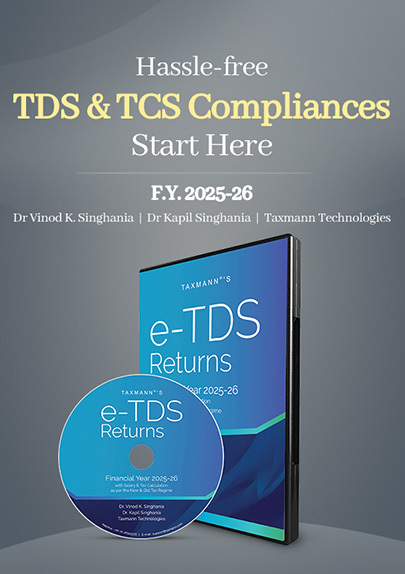Sec. 50C’s Legal Fiction Not Applicable for WDV Calculation in Claiming Depreciation on Asset Blocks
- Blog|News|Income Tax|
- 3 Min Read
- By Taxmann
- |
- Last Updated on 12 December, 2024

Case Details: 3A Composites India (P.) Ltd. vs. ACIT - [2024] 169 taxmann.com 72 (Mumbai-Trib.)
Judiciary and Counsel Details
- Om Prakash Kant, Accountant Member & Rahul Chaudhary, Judicial Member
-
Mihir Naniwadekar & Ms Rucha Vaidya, Advs. for the Appellant.
-
Ram Krishn Kedia for the Respondent.
Facts of the Case
During the year under consideration, the assessee had sold a factory building. The said property appeared as part of a block of assets in books of account, and depreciation on block of building was claimed by the assessee for income tax purposes. The stamp duty valuation of the said building was adopted at a much higher value than the actual sale consideration.
The assessee claimed depreciation on the remaining value of the written down value of the block of the building after reducing the actual sale consideration. During the assessment proceedings, the Assessing Officer (AO) held that based on the provision of section 50C, the depreciation should be worked out on the remaining value of the block of the building after reducing the stamp duty value of the building. Accordingly, the AO disallowed the excess depreciation.
On appeal, the CIT(A) upheld the AO’s order. Aggrieved by the order, the assessee filed an appeal to the Mumbai Tribunal.
ITAT Held
The Tribunal held that the sole issue in dispute in the ground raised by the assessee was in respect of the computation of the ‘written down value’ (WDV) as per the provision of section 43(6)(c)(i)(B). According to section 32(1)(ii), depreciation on any block of asset is allowed at the rate of percentage prescribed under the rule on the ‘written down value’ of the block of asset. In Explanation 2 to Section 32(1), it is mentioned that for the purpose of sub-section (1), the ‘written down value’ of the block of the asset shall have the same meaning as in sub-section (c) of clause 6 of section 43.
Explanation 4 to Section 32 has prescribed that the expression ‘moneys payable’ and ‘sold’ shall have the same meanings as in the Explanation below sub-section (4) of Section 41.
On perusal of the provisions of section 41(4), it was clear that for the purpose of computing ‘written down value’, the value of the ‘moneys payable’ in respect of the property sold has to be reduced from opening written down value of block of the asset. The inclusive definition provided for insurance, compensation, etc. received in respect of the said property and the price for which the property is sold.
In the instant case, the sale consideration of the building sold is not more than the opening written down value (WDV) of the block, including the new building acquired. Therefore, section 50 does not result in any short-term capital and, hence, does not apply to the present facts of the case until all the buildings under the block are sold. In that case, section 50 would be attracted, and the AO could have substituted the sale consideration received by stamp duty valuation of the property.
Therefore, the deeming fiction of section 50C cannot be extended while working out the written-down value to claim deprecation on the block of the asset. The legislature has created the legal fiction under section 50C to compute the capital gain on selling capital assets. Similarly, while computing the profits and gains of the business, the legislature has introduced a legal fiction under section 43CA for substantiating the sale consideration by the Stamp Duty Value while transfer of assets other than the capital asset, i.e., stock-in-trade, but no specific fiction has been created while computing deprecation on the block of the assets for substantiating the sale consideration by the Stamp Duty Valuation Authority.
Thus, the present definition of the ‘moneys payable’ cannot be construed as including as the Stamp Duty Valuation of the property and, therefore, the legal fiction for substantiating the sale consideration by the Stamp Duty Value created under either section 50 or section 43CA cannot be extended to section 32 for claiming depreciation on the block of the asset. Accordingly, the disallowance made by the AO was deleted.
List of Cases Reviewed
- ITO v. United Marine Academy [2011] 130 ITD 113 (Mum) [Para 12] – distinguished.
List of Cases Referred to
- DCIT v. Futurz Next Services ITA No. 1383/Del/2017/ITA No. 2396/Del/2017) (para 7)
- ITO v. United Marine Academy [2011] 10 taxmann.com 320/130 ITD 113 (Mumbai) (para 7).
Disclaimer: The content/information published on the website is only for general information of the user and shall not be construed as legal advice. While the Taxmann has exercised reasonable efforts to ensure the veracity of information/content published, Taxmann shall be under no liability in any manner whatsoever for incorrect information, if any.

Taxmann Publications has a dedicated in-house Research & Editorial Team. This team consists of a team of Chartered Accountants, Company Secretaries, and Lawyers. This team works under the guidance and supervision of editor-in-chief Mr Rakesh Bhargava.
The Research and Editorial Team is responsible for developing reliable and accurate content for the readers. The team follows the six-sigma approach to achieve the benchmark of zero error in its publications and research platforms. The team ensures that the following publication guidelines are thoroughly followed while developing the content:
- The statutory material is obtained only from the authorized and reliable sources
- All the latest developments in the judicial and legislative fields are covered
- Prepare the analytical write-ups on current, controversial, and important issues to help the readers to understand the concept and its implications
- Every content published by Taxmann is complete, accurate and lucid
- All evidence-based statements are supported with proper reference to Section, Circular No., Notification No. or citations
- The golden rules of grammar, style and consistency are thoroughly followed
- Font and size that’s easy to read and remain consistent across all imprint and digital publications are applied



 CA | CS | CMA
CA | CS | CMA
